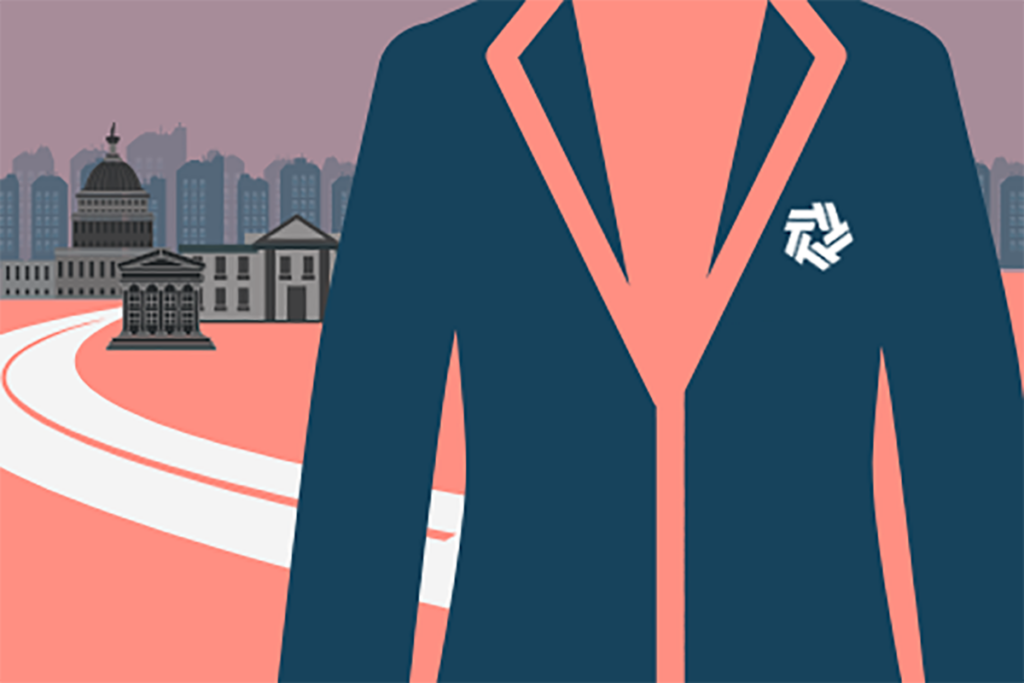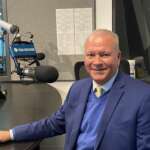From looming credit card balances to high-interest loans, debt is a pervasive problem in the U.S. Once you’re behind, getting ahead can feel insurmountable.
But you’re not alone. According to a Fidelity Investments 2025 Financial Resolutions study, 37% of people say paying off what they owe is their primary financial resolution this year.
To kickstart your own repayment plan, find out how others who owed large sums paid it all off. Here is how four people with very different circumstances ended up in debt — and the strategies they used to get ahead.
[See: 12 Financial New Year’s Resolutions for 2025]
1. One Person Used a Good Debt Repayment Plan
Steven Lundberg, a cybersecurity professional from Bonner Springs, Kansas, became a first-time homebuyer in 2020. It was an affordable purchase, but he soon began experiencing cost overruns.
“I knew there were some things that needed fixing, but not the foundation,” Lundberg says.
“That repair was around $5,000. Because it was my first home, it needed furnishings and that was a couple thousand dollars. In 2021 the HVAC went out, and that was another $10,000. I was soon $30,000 in debt and the pressure was on. It all went on credit cards and a personal loan,” he adds.
Lundberg began exploring repayment options. He didn’t want to consider bankruptcy, so he considered debt settlement. “Some companies told me to stop making payments on my cards and settle for a lump sum, but that hurts your credit so I wasn’t interested,” he says.
[U.S. News Editors Share How to Avoid Credit Score Drops in the New Year]
Then he found Money Management International (MMI), a nonprofit organization that provides financial counseling and education and debt management plans. According to the website, “If you choose to participate in a Debt Management Plan, you are asked to pay a set-up fee and monthly fee to cover the costs of creditor communications, general account maintenance, education, and other administrative costs.”
“They negotiated a lower interest rate, and brought each account to under 10% (interest),” Lundberg says.
“I didn’t have to worry about paying eight different cards, I just sent the money to MMI. The payment was larger than what I had been sending but most was going to the principal so I was able to get out of debt within two years,” he adds.
Along the way, Lundberg learned about how to handle money and credit better by developing a budget that focused on essentials.
“You have to know what’s important and make sure you’re getting what you need first,” he says. “That’s food, shelter, transportation and utilities. Don’t succumb to what your neighbor is doing. Their fancy barbecue is not your concern.”
2. Another Person Started a Profitable Business to Pay Off Debt
“When I was preparing to go to college at Brigham Young University, I thought I was financially ready, but I sold my car to a person I shouldn’t have trusted,” says Lisa Robbins, who lives in Murfreesboro, Tennessee, and co-founded an e-commerce business.
“He reneged on his commitment to pay me for the car, then somehow got it stuck in a river during a flood. I was out $2,500,” she adds.
Then, she decided to spend a semester in Paris as part of a study abroad program. It cost more than $5,000, which ended up on a student loan. After returning, she got married.
“My new husband and I were frugal and used his car, but the engine blew up on us as we were traveling to Texas from Utah for our wedding reception,” Robbins says. So, they financed a new car with a $6,000 loan.
By that point, their total debt had ballooned to $12,000.
Because the couple also wanted to have a big family, they started an online sporting goods business. “We worked like crazy to get it and make the kind of money we wanted,” she says.
Within three years she says they were earning more than $70,000 per year in profit and had paid off all of their debt.
“We were very assertive about two things: one, managing how we spent money so that we didn’t waste any, and two, spending all of our extra time building up an income that would allow us to get rid of our debt like we were putting out a fire.”
Robbins also gives credit to her faith. “We fasted and prayed for God’s help to bless us financially so we could develop our talents, raise a good family and give back to others.” Today they have eight children and are expecting their ninth.
“Our decision to tackle our debt early on and learn how to manage money has given our kids everything they need to be successful,” she says.
3. This Woman Created a Strict Budget for Debt Payoff
Elk Grove, California, resident Mina Grace Ward, author of the book “There Had to Be Another Way — Things You Didn’t Know You Could Do for Graves’ Disease,” became so sick in 2005 that she could no longer work. At the time, she was also going through a divorce.
“I went from being a high-income earner with an amazing career to living a life with illness,” Ward says. “It broke us financially and emotionally because I was the only income earner raising a family of four young sons.”
By around 2007, she owed $200,000 in combined medical bills, credit card balances and auto loans.
“I couldn’t do bankruptcy; I knew I had to pay it off myself,” she says. “We had a lot of hard Christmases. My boys witnessed so much. We struggled, but I was determined to show my kids how to do this.”
As she fell behind, Ward lost nearly everything except her home. Her credit score, once in the 800s, had fallen to the low 500s.
“Life became the life of hard knocks and juggling a family, a budget, crazy debt and keeping my sanity were all challenged and stretched to the limit,” says Ward. “I got diagnosed with Graves’ disease in 2015 and that kicked me to the curb — I knew things had to change!”
Her strategy: the 50/30/20 budgeting rule.
Half of her money went to fixed expenses like mortgage, utilities and phone payments, and a third went to discretionary costs like food and other variable but important expenses. The final 20% was for debt payment.
“I lived by this every day,” Ward says. “For a while I even switched to 30% to pay off debt. I was determined and disciplined.”
Ward made a pact. “We would learn to live beneath our means,” she says.
“Every decision and choice we made would answer one question: Does this help our family to be healthy and whole? If I didn’t have the cash in the bank to cover a purchase, guess what? I didn’t buy it,” she adds.
[READ: Less Is More: How to Live Below Your Means]
It took nearly 10 years of chipping away at her debt but she finally did it, all while learning how to reverse her Graves’ disease symptoms. Today she’s not only stronger financially, she says she’s emotionally, mentally and physically healthy, with a mission to remain debt-free despite her illness.
And her credit score? Ward is back in the 800 club.
4. This Man Utilized a 0% APR Card to Chip Away at Debt
Holden Andrews, founder of Helpful Home Group in La Quinta, California, is a real estate investor. Today, with a portfolio of four rental properties, his business is profitable. About two years ago, though, he made a decision that resulted in a huge and stressful debt balance.
“I got into personal credit card debt when I invested in a sales course that cost around $17,000,” Andrews says.
“I used a new U.S. Bank credit card to purchase it and I was terrified. I’ve never spent that much up to that point, not even for a car. But I’ve always been a big believer in investing in education, and that’s what it was for,” he adds.
He opened a 0% APR credit card specifically for the expense, knowing that it came with a hard deadline.
“It gave me 12 months to pay the entire $17,000 without interest accruing,” Andrews says. “I knew it was going to be around 24% APR if I didn’t pay it off, and I definitely didn’t want that.”
When no interest is added to a debt, the repayment calculation is simple. As long as you don’t add anything to the balance, simply divide the amount you owe by the number of finance-free months the creditor gives you. For a $17,000 debt, the lowest fixed monthly payment would be $1,417.
“I threw everything and the kitchen sink at it,” Andrews says. “All of my disposable income went to the card. I was sending between $1,500 and $1,800 payments during that time. Knowing the interest would go up at a certain date gave me the guardrails I needed to pay it all off in less than a year.”
According to Andrews, financing such an expensive course with a credit card was a risky move, but he’s glad he did it. The skills he learned enabled him to earn about $2,000 more per month, putting him in a much stronger financial position today.
Would Andrews recommend this method to everyone? If you’re sure you can make the payments so the debt is completely paid off before the regular rate goes into effect, yes. Otherwise, no.
“Unless you know you have the money to pay off the debt, do not do what I did,” he says.
Identify the Best Debt Repayment Strategy for You
Everybody has their own reason for getting into debt. It could be financial mismanagement, health issues, emergencies or even investing in something that will (hopefully) have value in the future.
Identifying the best way to dig yourself out of the hole is essential, but also make a point to learn from the experience. You don’t want to end up back where you started when you’re finally in the black.
More from U.S. News
What to Do if You Fall Behind on Bills
Medical Debt Will Now Be Wiped From Credit Reports
Spent Too Much on the Holidays? Here’s How to Manage a Debt Hangover
How 4 People Paid Off Debt in Record Time originally appeared on usnews.com













